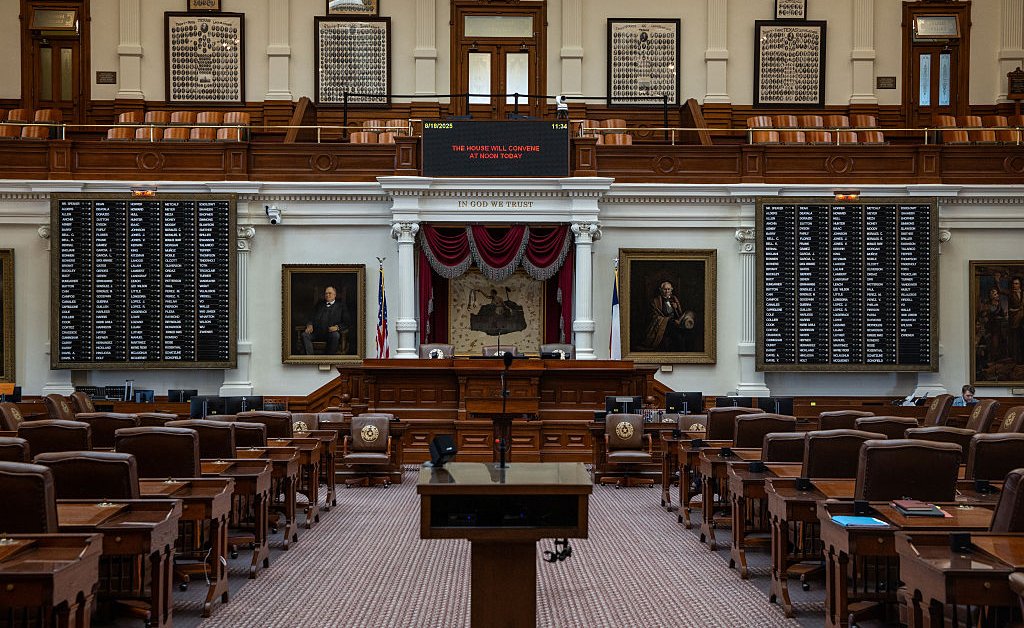I represent the people of El Paso, Texas in the state legislature, a west Texas district that is a 14-hour drive away from the Louisiana border. Yet, data from the Texas Legislative Council indicates that the congressional lines Republicans are rushing through Austin manages to somehow knit 90% of the state’s white voting power across that entire expanse—while slicing Latino and Black communities into pieces so small they have little power to choose their own representatives.
Fueled by rapid Latino population growth, Texas has amassed new congressional seats. But these gains have not strengthened the political voice of the communities driving that growth. Instead, Texas Republicans have, in my view, used racial engineering to make sure Texans of color cannot meaningfully influence elections for Congress or the state legislature.
Latinos now make up a larger share of Texas’s 31 million population than in California, the state often considered the Latino capital of America. Texas also has more Black residents than Georgia, despite Georgia’s reputation as a center of Black political power. Nearly 60% of Texans are people of color, and 95% of the state’s population growth in the past decade has come from those communities.
Despite this reality, Texas’s new congressional lines position white voters to decide at least 26 of the state’s 38 congressional seats—putting power in the hands of white voters by design, not accident. In another three districts, a “Latino majority” exists only on paper: map-drawers split cohesive barrios, added high-turnout Anglo precincts, and minimized the share of voting-age Latino citizens, handing the keys to white voters in these districts as well. Together, the racially-engineered 26 white-majority seats—plus the three manufactured “Latino” seats—is how the federal and state government openly conspired to gain additional Republican congressional seats. But the Trump Administration’s ambitions come at the expense of Latino and Black Texans.
Here’s the blunt math on the Texas Republican proposal: under this map, my team and I estimate it would take roughly 445,000 white residents to secure one member of Congress, but about 1.4 million Latino residents and 2 million Black residents to secure the same. In effect, the political “worth” of a Latino Texan is cut to one‑third of a white Texan’s, and for Black Texans, to one‑fifth. On paper the districts are equal in population; in practice the map assigns unequal electoral weight across racial lines. This means that the value of one Latino resident’s vote is worth just one-third the value of one white resident, and a black resident is one-fifth; it would take three Latino Texans, or five Black Texans, to equal the voting power of a single white Texan.
Republicans insist this is just politics. But Texas has a long, well‑documented history of crossing the line from hardball politics to what I would define as unlawful racial engineering. In 2006, the Supreme Court threw out a South Texas district for unlawfully diluting Latino voting strength after a mid‑decade redraw. Federal courts found problems with parts of the state’s 2011 maps, too. Texas operated under federal “preclearance” for decades because of past discrimination. When Shelby County v. Holder in 2013 removed that guardrail, it invited states like Texas to test the limits—passing racially engineered maps that can stand for years while litigation drags on, yielding short-term gains of up to five additional U.S. House seats.
Courts have recently required more Black opportunity districts in Alabama and allowed a second Black district to stand for now in Louisiana, underscoring that the Voting Rights Act still means something when states overreach. Texas, meanwhile, is moving in the opposite direction.
Some Republicans argue that growing GOP support among a subset of Latino voters in Texas justifies these lines. But even if you accept their premise, the Voting Rights Act is about opportunity, not partisan outcomes—ensuring communities of color can form districts where they have a realistic chance to elect their preferred candidates, regardless of party. Here, the state is doing the opposite: cracking and packing Latino and Black neighborhoods to reduce the number of such districts. This potential racial engineering sidelines communities of color and ensures they cannot meaningfully influence elections for Congress or the state legislature.
If this plan passes, Texas Latinos could become the most underrepresented racial or ethnic group in all 50 states. The level of under-representation in Texas’s proposal far exceeds the disparities that courts already forced Alabama and Louisiana to correct.
Maps like this do not merely entrench a party; they entrench a racial hierarchy. By cracking Latino barrios and Black neighborhoods, dismantling multi-racial districts, and fine-tuning the citizen-voting-age share to keep those communities just below the thresholds where they can elect their candidates of choice, the lines ensure white voting blocs remain decisive—even inside districts labeled “Latino.” That is racial vote dilution: it denies Latino and Black Texans an equal opportunity to translate population into seats, and it teaches a generation that their ballots carry less electoral weight because of race, not ideas.
A government that is not accountable to Latino and Black Texans teaches children early that their voices don’t count. Their families, who pay taxes, work hard, and build this state, are told their votes will be discounted by design and that representation can be rationed by color. When districts are drawn to dilute their votes, the message is that citizenship is conditional and equal protection negotiable. That is the very struggle the civil rights movement sought to end: government may not target voters based on race and then claim neutrality at the ballot box.
We have seen this before, from literacy tests to poll taxes—different tools, same result, keeping power just out of reach. A true democracy demands maps that make our government accountable to all of its people, not just the ones it prefers.
Read the full article here


